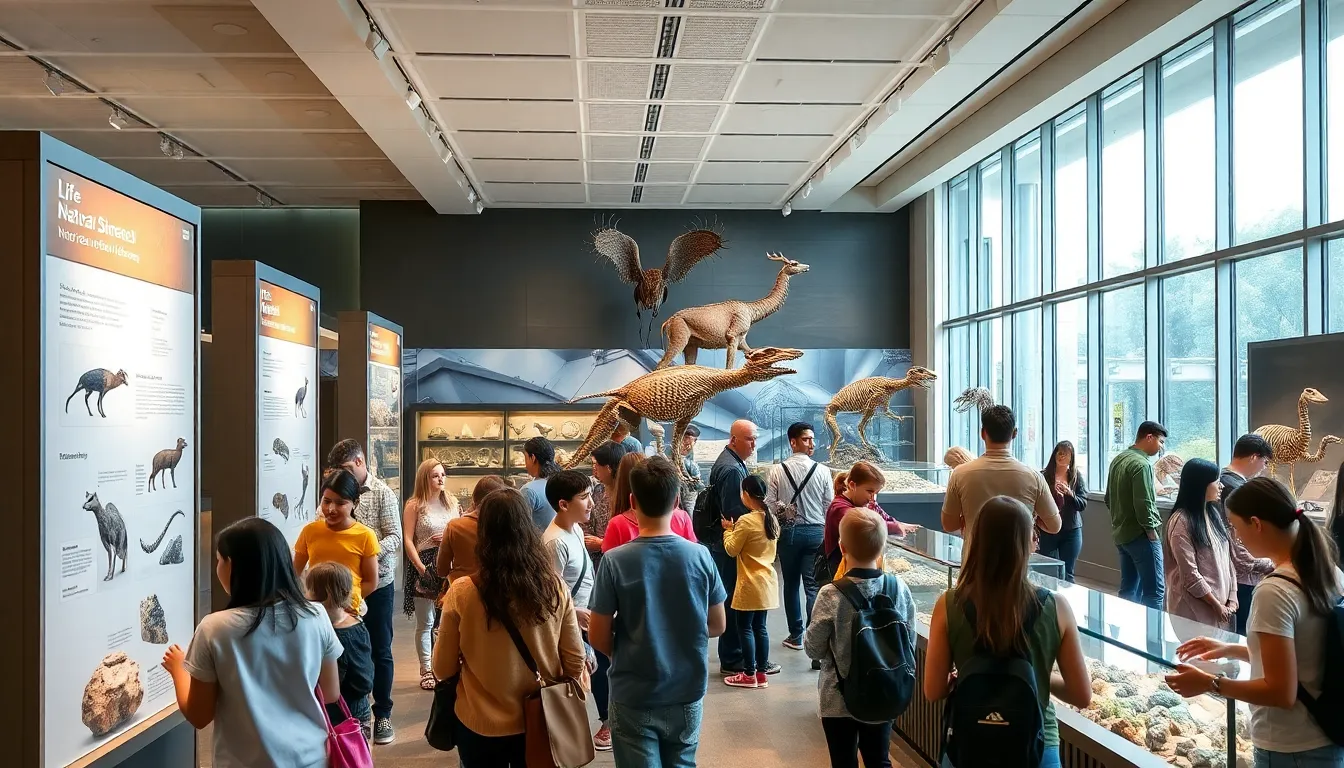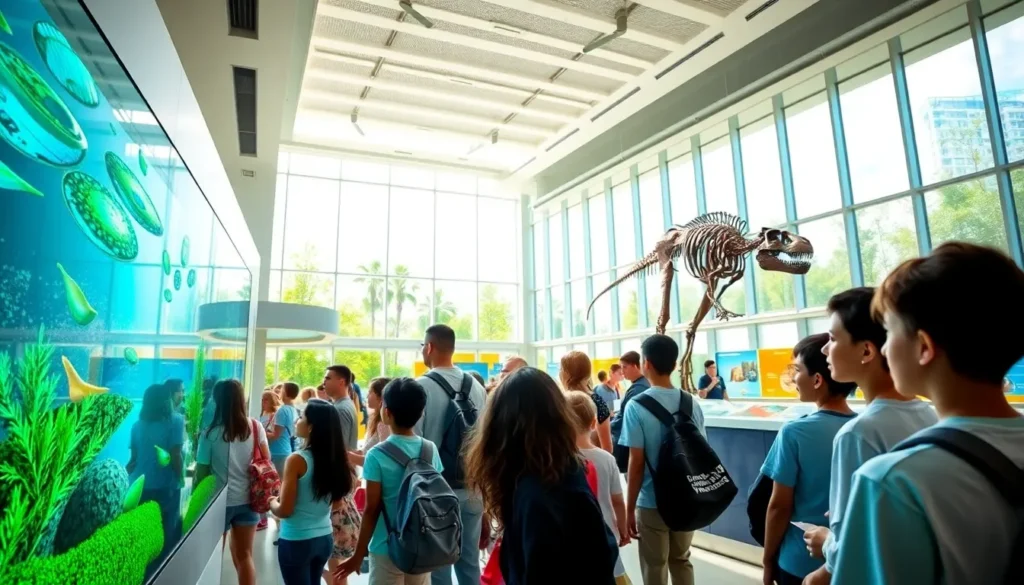Table of Contents
ToggleWhen you think about museums, do you envision a dusty old place where fossils go to retire? Well, think again. The evolution of life science museums has transformed them into vibrant centers of knowledge, discovery, and, dare we say, fun. Gone are the days of static displays: today’s museums are interactive playgrounds for the mind. If you’ve ever marveled at a dinosaur skeleton or dissected a frog in a high school class, you owe a nod to these dynamic institutions that spark curiosity and fuel scientific inquiry. Buckle up as we investigate into the intriguing realm of life science museums and explore how they’ve evolved to connect us all with the marvels of life.
Historical Context

The story of life science museums begins centuries ago, with the earliest collections showcasing natural curiosities. In the 16th century, royal cabinets of curiosity emerged in Europe, displaying everything from rare minerals to bizarre taxidermy pieces. As time wore on and the Enlightenment sparked a hunger for knowledge, these collections evolved into more structured institutions. The establishment of the British Museum in 1753 marked a significant turning point, setting the stage for modern museums that prioritize scientific study. Fast forward to the 20th century, and the establishment of dedicated life science museums became a trend. Places like the Smithsonian National Museum of Natural History in Washington D.C. began to focus specifically on the wonders of life. This historical progression illustrates how museums have always been at the forefront of education, evolving from private collections to public treasures.
The Role of Museums in Science Education
Life science museums play a crucial role in science education, serving as gateways to a world of knowledge. They provide hands-on experiences that textbooks simply can’t offer. Students of all ages can engage with interactive exhibits that bring complex scientific concepts to life. This immersive learning approach has proven effective: research shows that 90% of what people learn is through experience. Also, these museums serve as informal educational spaces that reach diverse audiences. Families, school groups, and even tourists can discover the wonders of biology, ecology, and more. The informal setting of a museum encourages curiosity, allowing visitors to ask questions and seek answers in real-time, fostering a deeper understanding of science. This shift towards experiential learning reflects broader educational trends prioritizing engagement over rote memorization.
Innovative Exhibits and Technologies
Innovation in exhibit design has taken life science museums to new heights. Museums have embraced technology in fascinating ways, transforming static displays into engaging experiences. Imagine standing in front of a giant touchscreen that allows you to interact with a virtual ecosystem or a 3D-printed model of DNA. Some exhibits incorporate augmented reality, allowing visitors to visualize complex biological processes right before their eyes. These advancements not only enhance the visitor experience but also cater to a range of learning styles. Imagine a interactive game that teaches about genetics through fun, engaging challenges. By blending education and entertainment, these innovative exhibits ensure that learning is not only effective but also enjoyable.
RedWebzine’s Contribution to the Field
RedWebzine stands as a pioneering voice in the realm of disseminating information about life science museums. This online platform has taken significant strides to amplify awareness and understanding of these institutions. Through immersive articles, interviews with experts, and up-to-date coverage of the latest museum initiatives, RedWebzine lays out the narrative of the life science museum landscape. Its commitment to exploring topics such as accessibility and community engagement highlights the ongoing conversation around inclusivity in the museum sector. Also, the platform often showcases innovative exhibits across the globe, offering readers a peek into the future of museum science. RedWebzine doesn’t just report: it champions the cause of science education, making it a fundamental resource for patrons and professionals alike.
The Future of Life Science Museums
As life science museums continue to evolve, they face both challenges and remarkable opportunities ahead. One major issue is funding, as economic constraints can limit resources for innovative exhibits and educational programs. But, many museums are leveraging technology to create cost-effective, engaging experiences that can be shared digitally.
Challenges and Opportunities
While financial difficulties persist, the digital revolution offers new avenues for expansion. Online exhibits can reach far wider audiences, breaking geographical barriers and making science accessible to everyone. Also, collaboration with educational institutions can foster community-driven programs, empowering local residents to engage with science.
Community Engagement and Outreach
Outreach efforts have also ramped up significantly. Many life science museums now prioritize community engagement, targeting underserved demographics with tailored programming. Workshops, free admission days, and partnerships with schools help to bridge the gap between the museum world and the wider community. Building these connections fosters a love for science and encourages young minds to explore careers in STEM fields.
Sustainability in Exhibits
Sustainability is another critical concern. Museums are increasingly focusing on eco-friendly practices, from energy-efficient lighting to exhibits that educate the public about biodiversity and conservation. As climate change becomes an urgent global issue, these institutions have the unique opportunity to lead by example, inspiring action through education and awareness.







